
Kód: 02597497
Lasso Peptides
Autor Yanyan Li, Séverine Zirah, Sylvie Rebuffat
Lasso peptides form a growing family of fascinating ribosomally-synthesized and post-translationally modified peptides produced by bacteria. They contain 15 to 24 residues and share a unique interlocked topology that involves an N ... celý popis
- Jazyk:
 Angličtina
Angličtina - Vazba: Brožovaná
- Počet stran: 103
Nakladatelství: Springer-Verlag New York Inc., 2014
- Více informací o knize

1681 Kč

Skladem u dodavatele v malém množství
Odesíláme za 12-17 dnů
Potřebujete více kusů?Máte-li zájem o více kusů, prověřte, prosím, nejprve dostupnost titulu na naši zákaznické podpoře.
Přidat mezi přání
Mohlo by se vám také líbit
-

Antimicrobial Peptides
3907 Kč -

ArchiMate 2.1 Specification
1333 Kč -

GLASTONBURY ABBEY - GERMAN
169 Kč -

Amelia Bedelia on the Move
145 Kč -

Library of the World's Best Literature - Ancient and Modern - Vol.XXXIV (Forty-Five Volumes); Shelley-Sophocles
732 Kč -

La patente del cacciatore. Tutte le nozioni per superare l'esame di abilitazione
612 Kč -

La separación
111 Kč
Darujte tuto knihu ještě dnes
- Objednejte knihu a zvolte Zaslat jako dárek.
- Obratem obdržíte darovací poukaz na knihu, který můžete ihned předat obdarovanému.
- Knihu zašleme na adresu obdarovaného, o nic se nestaráte.
Více informací o knize Lasso Peptides
Nákupem získáte 168 bodů
 Anotace knihy
Anotace knihy
Lasso peptides form a growing family of fascinating ribosomally-synthesized and post-translationally modified peptides produced by bacteria. They contain 15 to 24 residues and share a unique interlocked topology that involves an N-terminal 7 to 9-residue macrolactam ring where the C-terminal tail is threaded and irreversibly trapped. The ring results from the condensation of the N-terminal amino group with a side-chain carboxylate of a glutamate at position 8 or 9, or an aspartate at position 7, 8 or 9. The trapping of the tail involves bulky amino acids located in the tail below and above the ring and/or disulfide bridges connecting the ring and the tail. Lasso peptides are subdivided into three subtypes depending on the absence (class II) or presence of one (class III) or two (class I) disulfide bridges. The lasso topology results in highly compact structures that give to lasso peptides an extraordinary stability towards both protease degradation and denaturing conditions. Lasso peptides are generally receptor antagonists, enzyme inhibitors and/or antibacterial or antiviral (anti-HIV) agents. The lasso scaffold and the associated biological activities shown by lasso peptides on different key targets make them promising molecules with high therapeutic potential. Their application in drug design has been exemplified by the development of an integrin antagonist based on a lasso peptide scaffold. The biosynthesis machinery of lasso peptides is therefore of high biotechnological interest, especially since such highly compact and stable structures have to date revealed inaccessible by peptide synthesis. Lasso peptides are produced from a linear precursor LasA, which undergoes a maturation process involving several steps, in particular cleavage of the leader peptide and cyclization. The post-translational modifications are ensured by a dedicated enzymatic machinery, which is composed of an ATP-dependent cysteine protease (LasB) and a lactam synthetase (LasC) that form an enzymatic complex called lasso synthetase. Microcin J25, produced by Escherichia coli AY25, is the archetype of lasso peptides and the most extensively studied. To date only around forty lasso peptides have been isolated, but genome mining approaches have revealed that they are widely distributed among Proteobacteria and Actinobacteria, particularly in Streptomyces, making available a rich resource of novel lasso peptides and enzyme machineries towards lasso topologies.§
 Parametry knihy
Parametry knihy
Zařazení knihy Knihy v angličtině Medicine Clinical & internal medicine Diseases & disorders
1681 Kč
- Plný název: Lasso Peptides
- Podnázev: Bacterial Strategies to Make and Maintain Bioactive Entangled Scaffolds
- Autor: Yanyan Li, Séverine Zirah, Sylvie Rebuffat
- Jazyk:
 Angličtina
Angličtina - Vazba: Brožovaná
- Počet stran: 103
- EAN: 9781493910090
- ISBN: 1493910094
- ID: 02597497
- Nakladatelství: Springer-Verlag New York Inc.
- Hmotnost: 1942 g
- Rozměry: 235 × 155 × 7 mm
- Datum vydání: 22. October 2014
Oblíbené z jiného soudku
-

Radical Remission
454 Kč -

Emperor of All Maladies
338 Kč -

Healing Add
460 Kč -

Bethesda Handbook of Clinical Oncology
1823 Kč -
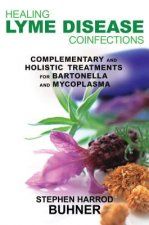
Healing Lyme Disease Coinfections
444 Kč -

Cancer Is Not a Disease - It's a Healing Mechanism
709 Kč -
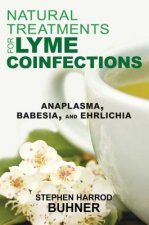
Natural Treatments for Lyme Coinfections
424 Kč -
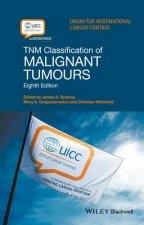
TNM Classification of Malignant Tumours 8e
1451 Kč -
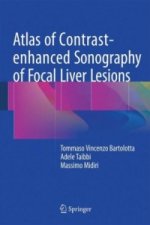
Atlas of Contrast-enhanced Sonography of Focal Liver Lesions
2810 Kč -

Genetics and Epigenetics of Breast Cancer
4798 Kč -

Gout & Its Cure
132 Kč -
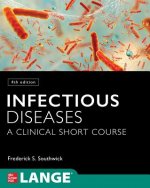
Infectious Diseases: A Clinical Short Course
2367 Kč -

Cancer as a Metabolic Disease - On the Origin, Management, and Prevention of Cancer
3828 Kč -

Comprehensive Review of Infectious Diseases
3368 Kč -

How to Starve Cancer
512 Kč -

Roitt's Essential Immunology 13e
1696 Kč -

CT Anatomy for Radiotherapy
2388 Kč -

Breast Ultrasound
2532 Kč -

Spillover
313 Kč -

Autoimmune Solution
303 Kč -

Lanzkowsky's Manual of Pediatric Hematology and Oncology
5497 Kč -

Principles of Gynecologic Oncology Surgery
9095 Kč -

Musculoskeletal Imaging
2292 Kč -

Radiation Oncology Management Decisions
2920 Kč -

Netter's Infectious Diseases
2127 Kč -

Emergency Management of Infectious Diseases
3455 Kč -

Color Atlas of Immunology
610 Kč -

Key to Self-Liberation
2333 Kč -

Handbook of Breast MRI
3247 Kč -

Stereotactic Radiosurgery and Stereotactic Body Radiation Therapy (SBRT)
7413 Kč -

Palliative Radiation Oncology
6277 Kč -

Health and Disease Begin in the Colon
1288 Kč -

Abeloff's Clinical Oncology
11333 Kč -

Clinical Physiology of Acid-Base and Electrolyte Disorders
2851 Kč -
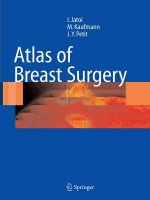
Atlas of Breast Surgery
7468 Kč -

Illustrated Anatomical Segmentectomy for Lung Cancer
4485 Kč -

Cardio-Oncology Practice Manual: A Companion to Braunwald's Heart Disease
3632 Kč -

Chemotherapy Protocols and Infusion Sequence
2810 Kč -

Immunology Guidebook
6897 Kč -

Oncology: Genomics, Precision Medicine and Therapeutic Targets
4798 Kč -

Schaum's Outline of Immunology
756 Kč -

Allergic to Life
1079 Kč -

Cardio-Oncology
2810 Kč -

Oxford Handbook of Infectious Diseases and Microbiology
1334 Kč -

Great Influenza
426 Kč -

Oxford Handbook of Expedition and Wilderness Medicine
1391 Kč -

Cancer and the New Biology of Water
604 Kč -

Everyday Mindfulness for OCD
399 Kč -

Basic Immunology
1771 Kč
Osobní odběr Praha, Brno a 12903 dalších
Copyright ©2008-24 nejlevnejsi-knihy.cz Všechna práva vyhrazenaSoukromíCookies


 Vrácení do měsíce
Vrácení do měsíce 571 999 099 (8-15.30h)
571 999 099 (8-15.30h)